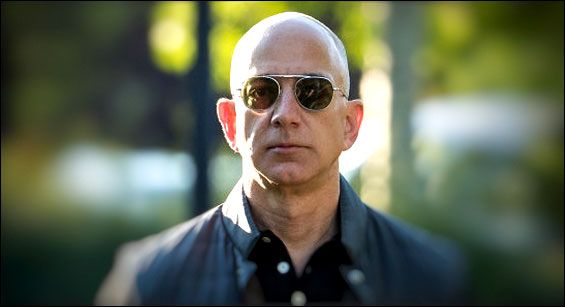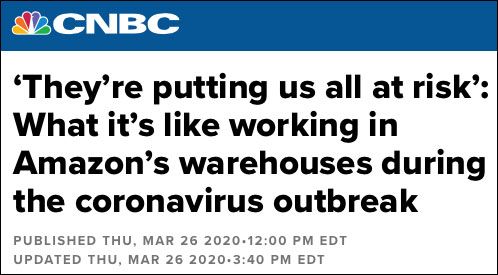
This report was written by David Sirota and Andrew Perez
Amazon executives on Thursday admitted that nearly 20,000 of the company’s employees were infected or presumed infected by the coronavirus. The admission comes just months after The Daily Poster broke the news that Amazon management — with the backing of the Trump administration — shut down a shareholder initiative designed to force the retail giant to better protect the health and safety of its employees.
The Trump administration’s decision came amid the pandemic — in fact, it was handed down the day after a national media report on Amazon workers sounding the alarm about what they said were unsafe working conditions during the coronavirus outbreak.
Since the pandemic began, Amazon founder Jeff Bezos has seen his net worth increase by $90 billion — and a report this week by Reveal found that Amazon “has deceived the public on rising injury rates among its warehouse workers,” based on a review of internal company documents.
Meanwhile, Trump’s Securities and Exchange Commission recently passed a new initiative making it harder for shareholders to ever introduce such resolutions, which are designed to let shareholders broadly shape policy at the corporations they own stock in.
“Ensuring Safe And Healthy Workplaces”
In May, The Daily Poster first broke the news that Amazon executives petitioned the Trump-controlled SEC to bless its decision to block a vote on a shareholder resolution requiring the company to formulate a “comprehensive policy” for “ensuring safe and healthy workplaces” for the company’s workers.
Amazon argued that it had already “substantially implemented the proposal by adopting and posting on its website the Amazon Global Human Rights Principles” — a statement in which the company proclaims: “The health, wellness, and safety of our workers is our number one priority.”
Proponents of the shareholder initiative countered that the website statement was “stopping short of a meaningful commitment” to protect workers, and did “not describe the process Amazon will use to identify, assess, prevent, mitigate, and, where appropriate, address” workers rights.
On March 27, as the coronavirus was spreading, Trump’s SEC sided with Amazon and issued a so-called “no action” ruling saying the agency concurred with the company and would not recommend any adverse enforcement action against executives if they blocked shareholders from voting on the proposal.
The day before that SEC decision, CNBC published a detailed report on Amazon workers saying that warehouses were unsafe and potentially exposing them to the coronavirus.

Six months after the Trump SEC handed down its decision, Amazon on Thursday published data admitting that “19,816 employees have tested positive or been presumed positive for COVID-19.” The data looked at cases among “front-line employees” at Amazon and Whole Foods.
Amazon argues in its post that its COVID numbers are lower than expected, writing that “if the rate among Amazon and Whole Foods Market employees were the same as it is for the general population rate, we estimate that we would have seen 33,952 cases among our workforce. In reality, 19,816 employees have tested positive or been presumed positive for COVID-19—42% lower than the expected number.”
Earlier this week, Reveal reported that Amazon “company officials have profoundly misled the public and lawmakers about its record on worker safety.”
“In 2019, Amazon fulfillment centers recorded 14,000 serious injuries -- those requiring days off or job restrictions,” the outlet wrote. “The overall rate of 7.7 serious injuries per 100 employees was 33% higher than in 2016 and nearly double the most recent industry standard.”
Late last month, Trump’s SEC passed an initiative that makes it much more difficult for shareholders to have resolutions qualify to be voted on. The higher threshold was a big win for large corporations pushing for the change.
Photo credit: Drew Angerer / Getty
This newsletter relies on readers pitching in to support it. If you like what you just read and want to help expand this kind of journalism, consider becoming a paid subscriber by clicking this link.




